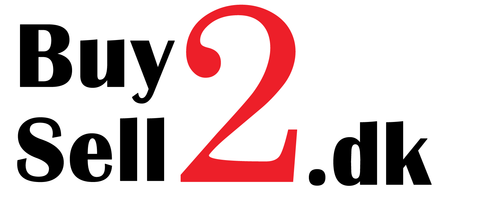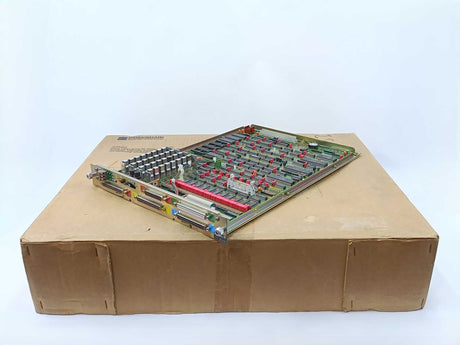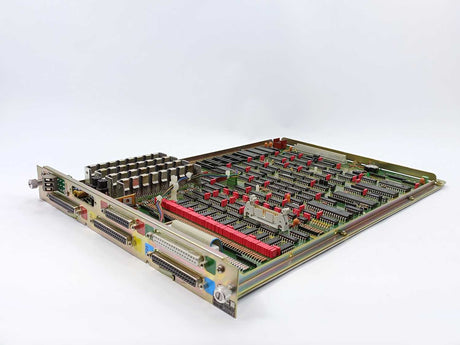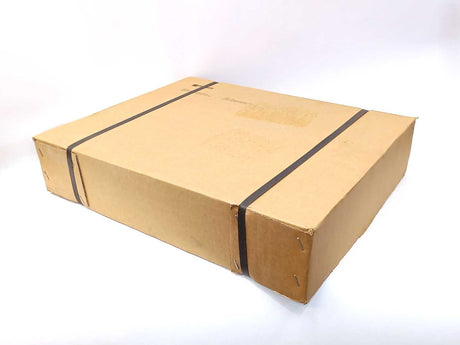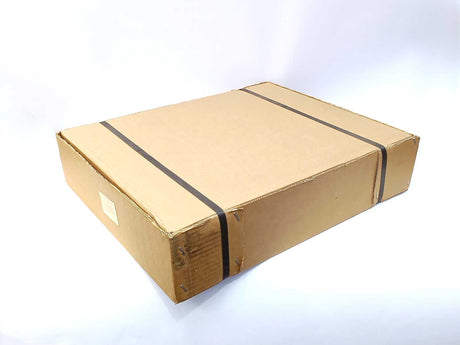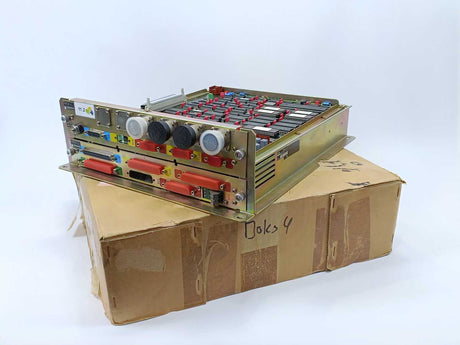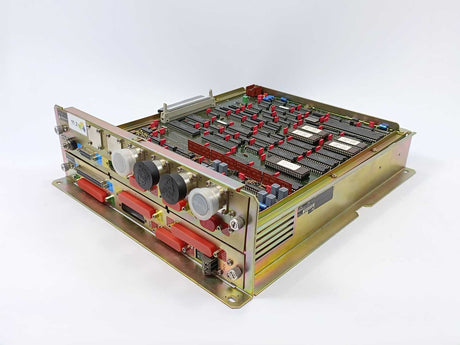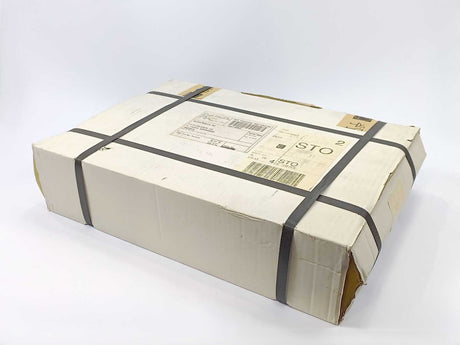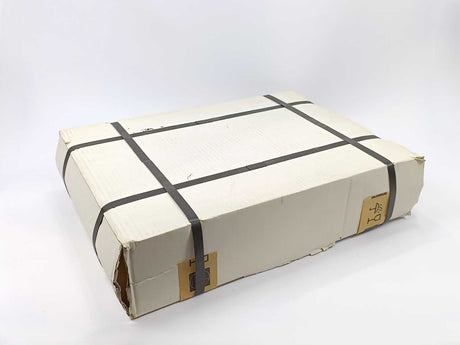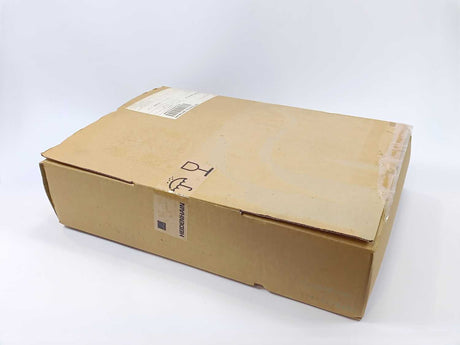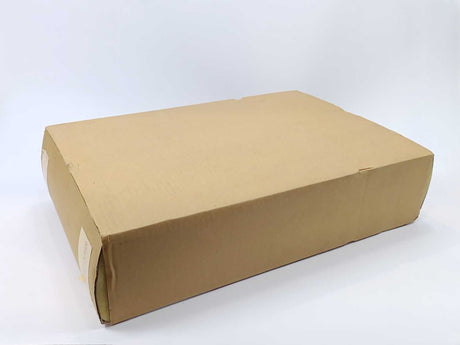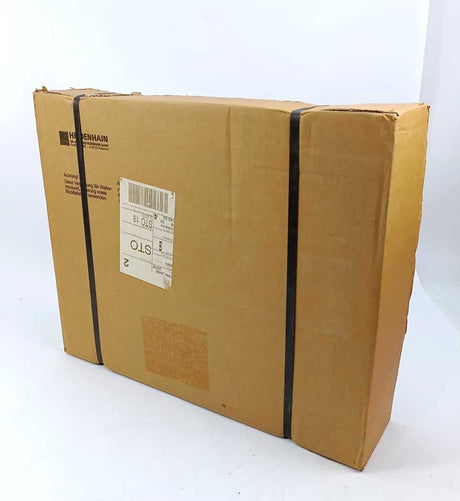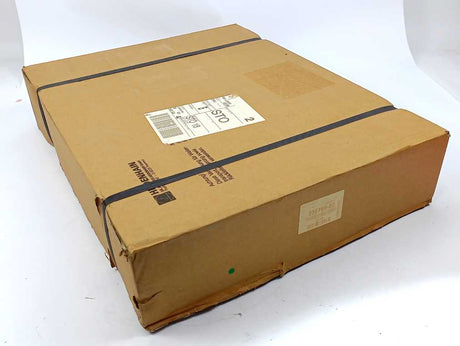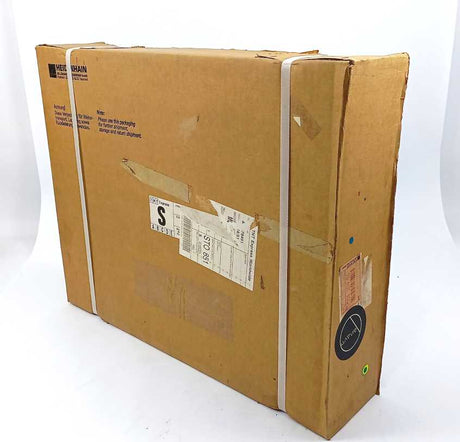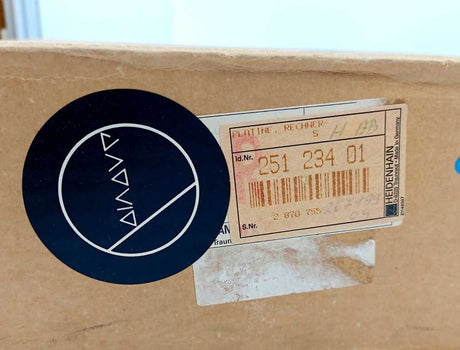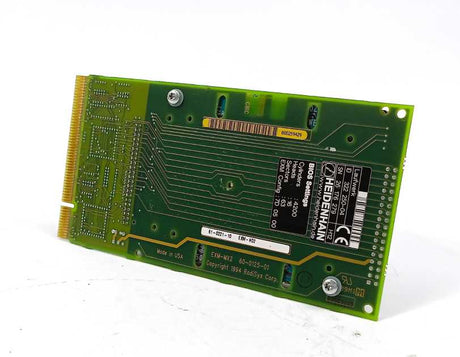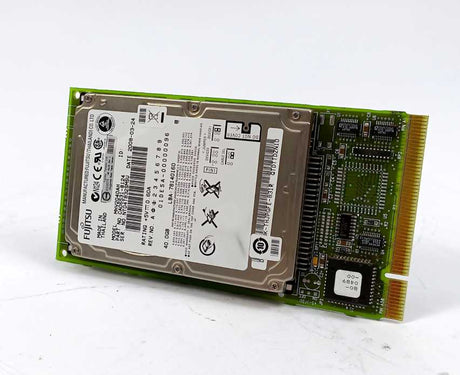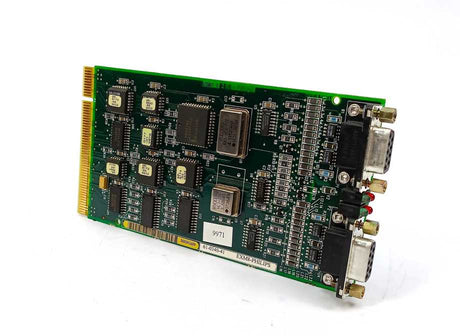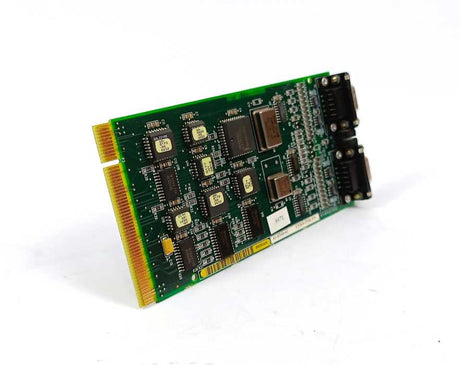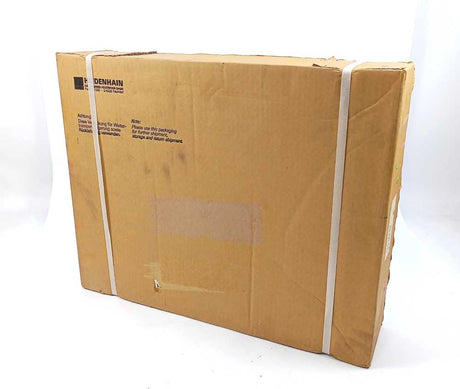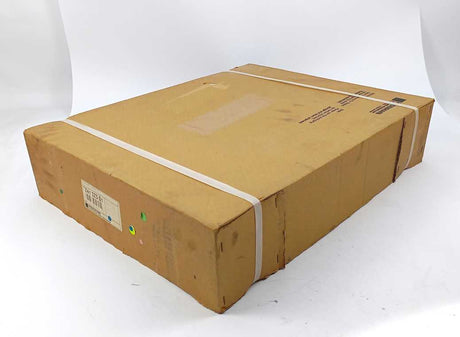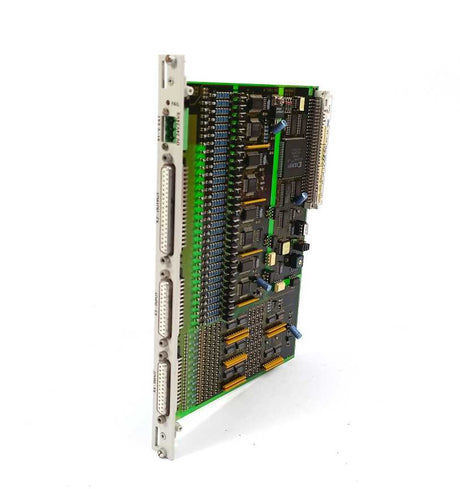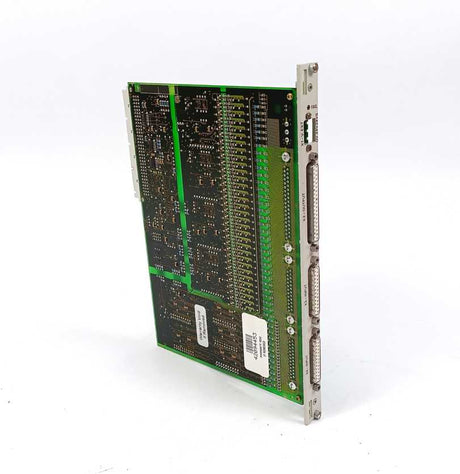PLC
You can buy ex VAT, if you create an account.
Remember to provide your VAT nr.!
P-NET PD3230 Weight Transmitter
€279,20(Ekskl. moms)Enhedspris/Ikke tilgængelig€349,00(Inkl. moms)Enhedspris€0,00/Ikke tilgængeligMeget få på lager (1 enhed)P-NET PD3120 Process-data Interface Digital I/O
€103,20(Ekskl. moms)Enhedspris/Ikke tilgængelig€129,00(Inkl. moms)Enhedspris€0,00/Ikke tilgængeligMeget få på lager (2 enheder)P-NET PAD3940 PD3940 P-NET to RS232 Converter
€159,20(Ekskl. moms)Enhedspris/Ikke tilgængelig€199,00(Inkl. moms)Enhedspris€0,00/Ikke tilgængeligMeget få på lager (2 enheder)Envirofalk Elma-Pure 600 Water Treatment System
€23.999,20(Ekskl. moms)Enhedspris/Ikke tilgængelig€29.999,00(Inkl. moms)Enhedspris€0,00/Ikke tilgængeligMeget få på lager (1 enhed)Siemens 6ES7792-0AA00-0XA0 Simatic USB Prommer, W: DGE-660TD
€1.279,20(Ekskl. moms)Enhedspris/Ikke tilgængelig€1.599,00(Inkl. moms)Enhedspris€0,00/Ikke tilgængeligMeget få på lager (1 enhed)Prolon Control Systems PZM4148-M PCB125/4 Lonbox 2-Zone
€151,20(Ekskl. moms)Enhedspris/Ikke tilgængelig€189,00(Inkl. moms)Enhedspris€0,00/Ikke tilgængeligMeget få på lager (2 enheder)Prolon Control Systems PZM4148-M PCB125/4 Lonbox 2-Zone
€151,20(Ekskl. moms)Enhedspris/Ikke tilgængelig€189,00(Inkl. moms)Enhedspris€0,00/Ikke tilgængeligPå lager (10 enheder)Prolon Control Systems PZM4148-M PCB125/4 Lonbox 2-Zone
€151,20(Ekskl. moms)Enhedspris/Ikke tilgængelig€189,00(Inkl. moms)Enhedspris€0,00/Ikke tilgængeligPå lager (51 enheder)Control Techniques 901E-2500-RBC Profibus Remote Base Controller
€399,20(Ekskl. moms)Enhedspris/Ikke tilgængelig€499,00(Inkl. moms)Enhedspris€0,00/Ikke tilgængeligMeget få på lager (2 enheder)Control Techniques 901F-2562 8PT Analog Output
€319,20(Ekskl. moms)Enhedspris/Ikke tilgængelig€399,00(Inkl. moms)Enhedspris€0,00/Ikke tilgængeligMeget få på lager (1 enhed)Nordson 1100391 Hot Melt Adhesive System P10,6H, FulFill
€3.039,20(Ekskl. moms)Enhedspris/Ikke tilgængelig€3.799,00(Inkl. moms)Enhedspris€0,00/Ikke tilgængeligMeget få på lager (1 enhed)Nordson 1022230A Problue 4, Hot Glue Dispenser 200-240V, 50/60Hz, 26A
€2.879,20(Ekskl. moms)Enhedspris/Ikke tilgængelig€3.599,00(Inkl. moms)Enhedspris€0,00/Ikke tilgængeligMeget få på lager (2 enheder)Nordson 1022232 Problue 7, Melter 200-240V, 50/60Hz, 27A
€3.839,20(Ekskl. moms)Enhedspris/Ikke tilgængelig€4.799,00(Inkl. moms)Enhedspris€0,00/Ikke tilgængeligMeget få på lager (1 enhed)Nordson 1022236A Problue 10, Melter 200-240V
€3.039,20(Ekskl. moms)Enhedspris/Ikke tilgængelig€3.799,00(Inkl. moms)Enhedspris€0,00/Ikke tilgængeligMeget få på lager (1 enhed)STAHLWILLE 58521031 7731 Torkmaster Ver. 3.03.02.01 CD
€0,00(Ekskl. moms)Enhedspris/Ikke tilgængelig€0,00(Inkl. moms)Enhedspris€0,00/Ikke tilgængeligMeget få på lager (1 enhed)- €159,20
(Ekskl. moms)Enhedspris/Ikke tilgængelig€199,00(Inkl. moms)Enhedspris€0,00/Ikke tilgængeligPå lager (28 enheder) KEYENCE N-R2 RS-232C Dedicated Communication Unit
€103,20(Ekskl. moms)Enhedspris/Ikke tilgængelig€129,00(Inkl. moms)Enhedspris€0,00/Ikke tilgængeligMeget få på lager (1 enhed)KEYENCE N-R2 RS-232C Dedicated Communication Unit
€47,20(Ekskl. moms)Enhedspris/Ikke tilgængelig€59,00(Inkl. moms)Enhedspris€0,00/Ikke tilgængeligFå på lager (3 enheder)Microstar Laboratories DAP 840/103 Data Acquisition Processor DAP Cards
€319,20(Ekskl. moms)Enhedspris/Ikke tilgængelig€399,00(Inkl. moms)Enhedspris€0,00/Ikke tilgængeligMeget få på lager (1 enhed)Siemens SUS-190220 SIMATIC STEP7 Safety Advanced V16
€159,20(Ekskl. moms)Enhedspris/Ikke tilgængelig€199,00(Inkl. moms)Enhedspris€0,00/Ikke tilgængeligMeget få på lager (1 enhed)Siemens 6ES7653-2BA00-0XB5 SIMATIC PCS 7 Runtime License AS (PO 100)
€159,20(Ekskl. moms)Enhedspris/Ikke tilgængelig€199,00(Inkl. moms)Enhedspris€0,00/Ikke tilgængeligMeget få på lager (2 enheder)Leuze Electronic 50032814 MA OMS 1 IS Interbus-S Connecting Unit
€279,20(Ekskl. moms)Enhedspris/Ikke tilgængelig€349,00(Inkl. moms)Enhedspris€0,00/Ikke tilgængeligPå lager (13 enheder)Siemens 6DD1681-0AD1 SE3.1, Interface Module
€0,00(Ekskl. moms)Enhedspris/Ikke tilgængelig€0,00(Inkl. moms)Enhedspris€0,00/Ikke tilgængeligPå lager (6 enheder)LENORD+BAUER GEL_8000 80DAW3_M LP_1118 V2.0
€159,20(Ekskl. moms)Enhedspris/Ikke tilgængelig€199,00(Inkl. moms)Enhedspris€0,00/Ikke tilgængeligMeget få på lager (1 enhed)StarTech ICUSB2324I 4 Port USB to DB9 RS232 Serial Adapter Hub
€79,20(Ekskl. moms)Enhedspris/Ikke tilgængelig€99,00(Inkl. moms)Enhedspris€0,00/Ikke tilgængeligPå lager (67 enheder)Hesch HE 5910 CAN-CPU/Temp 591000370084
€479,20(Ekskl. moms)Enhedspris/Ikke tilgængelig€599,00(Inkl. moms)Enhedspris€0,00/Ikke tilgængeligMeget få på lager (1 enhed)HEIDENHAIN 249652-01 Rechner 249 652-01
€799,20(Ekskl. moms)Enhedspris/Ikke tilgængelig€999,00(Inkl. moms)Enhedspris€0,00/Ikke tilgængeligMeget få på lager (1 enhed)HEIDENHAIN 249820-01 Control circuit board 249 820-01
€1.999,20(Ekskl. moms)Enhedspris/Ikke tilgængelig€2.499,00(Inkl. moms)Enhedspris€0,00/Ikke tilgængeligMeget få på lager (1 enhed)HEIDENHAIN 251479-01 LE 2500 Platine PLC K12 251 231 01
€799,20(Ekskl. moms)Enhedspris/Ikke tilgængelig€999,00(Inkl. moms)Enhedspris€0,00/Ikke tilgængeligMeget få på lager (1 enhed)HEIDENHAIN 325821-03 PLC-GRAPHICS BOARD 325 821-03
€2.799,20(Ekskl. moms)Enhedspris/Ikke tilgængelig€3.499,00(Inkl. moms)Enhedspris€0,00/Ikke tilgængeligMeget få på lager (1 enhed)HEIDENHAIN 249823-01 Control Circuit Module 249 1823-01
€1.199,20(Ekskl. moms)Enhedspris/Ikke tilgængelig€1.499,00(Inkl. moms)Enhedspris€0,00/Ikke tilgængeligMeget få på lager (1 enhed)HEIDENHAIN 235769-02 Contr. loop board 325 821-03
€1.999,20(Ekskl. moms)Enhedspris/Ikke tilgængelig€2.499,00(Inkl. moms)Enhedspris€0,00/Ikke tilgængeligMeget få på lager (1 enhed)HEIDENHAIN 251234-01 Processor board 251 234-01
€1.999,20(Ekskl. moms)Enhedspris/Ikke tilgængelig€2.499,00(Inkl. moms)Enhedspris€0,00/Ikke tilgængeligMeget få på lager (1 enhed)HEIDENHAIN 322250-04 Drive 322 250-04
€479,20(Ekskl. moms)Enhedspris/Ikke tilgængelig€599,00(Inkl. moms)Enhedspris€0,00/Ikke tilgængeligMeget få på lager (1 enhed)HEIDENHAIN 322758-02 Interfaceplatine
€559,20(Ekskl. moms)Enhedspris/Ikke tilgængelig€699,00(Inkl. moms)Enhedspris€0,00/Ikke tilgængeligMeget få på lager (1 enhed)HEIDENHAIN 241323-01 board 241 323-01
€2.799,20(Ekskl. moms)Enhedspris/Ikke tilgængelig€3.499,00(Inkl. moms)Enhedspris€0,00/Ikke tilgængeligMeget få på lager (1 enhed)Philips 402222930114 IOB-80, VER: 224 7421.4 4022-229-30114
€799,20(Ekskl. moms)Enhedspris/Ikke tilgængelig€999,00(Inkl. moms)Enhedspris€0,00/Ikke tilgængeligMeget få på lager (1 enhed)Philips 4022-229-3011 BOARD PSS/M2/V0
€799,20(Ekskl. moms)Enhedspris/Ikke tilgængelig€999,00(Inkl. moms)Enhedspris€0,00/Ikke tilgængeligMeget få på lager (1 enhed)Siemens 6SC9830-0HF40 459002.9275.40 Adapter Board
€319,20(Ekskl. moms)Enhedspris/Ikke tilgængelig€399,00(Inkl. moms)Enhedspris€0,00/Ikke tilgængeligMeget få på lager (1 enhed)ANSER U2 Smart 7104002010 Thermal Inkjet Printer Defective + Remote controller
€0,00(Ekskl. moms)Enhedspris/Ikke tilgængelig€0,00(Inkl. moms)Enhedspris€0,00/Ikke tilgængeligMeget få på lager (1 enhed)ANSER U2 Smart 7004005056 Thermal Inkjet Printer + Remote controller
€0,00(Ekskl. moms)Enhedspris/Ikke tilgængelig€0,00(Inkl. moms)Enhedspris€0,00/Ikke tilgængeligMeget få på lager (1 enhed)ANSER U2 Smart 7104002010 Thermal Inkjet Printer + Remote controller
€0,00(Ekskl. moms)Enhedspris/Ikke tilgængelig€0,00(Inkl. moms)Enhedspris€0,00/Ikke tilgængeligMeget få på lager (1 enhed)ANSER U2 Smart 7004005056 Thermal Inkjet Printer + Remote controller
€0,00(Ekskl. moms)Enhedspris/Ikke tilgængelig€0,00(Inkl. moms)Enhedspris€0,00/Ikke tilgængeligMeget få på lager (1 enhed)Siemens SE.459002.0220.06 Module W/ 6SC9834-0CG04 - 459002.9226.04
€71,20(Ekskl. moms)Enhedspris/Ikke tilgængelig€89,00(Inkl. moms)Enhedspris€0,00/Ikke tilgængeligFå på lager (3 enheder)Bosch 1070080585-106 0300-I-C-T-V Rexroth Control Board
€63,20(Ekskl. moms)Enhedspris/Ikke tilgængelig€79,00(Inkl. moms)Enhedspris€0,00/Ikke tilgængeligMeget få på lager (1 enhed)PRC D7-940-067-18 D7-940-196-4 Microprocessor Control PCB Assembly
€159,20(Ekskl. moms)Enhedspris/Ikke tilgængelig€199,00(Inkl. moms)Enhedspris€0,00/Ikke tilgængeligMeget få på lager (1 enhed)PRC C7-940-074-4 C7-940-212-1 Flow Meter
€79,20(Ekskl. moms)Enhedspris/Ikke tilgængelig€99,00(Inkl. moms)Enhedspris€0,00/Ikke tilgængeligMeget få på lager (1 enhed)PRC D7-940-056-1 D7-940-188-1 HV Control Board Assembly
€159,20(Ekskl. moms)Enhedspris/Ikke tilgængelig€199,00(Inkl. moms)Enhedspris€0,00/Ikke tilgængeligMeget få på lager (1 enhed)HYPERPULSE D7-940-046-0 Receiver board
€319,20(Ekskl. moms)Enhedspris/Ikke tilgængelig€399,00(Inkl. moms)Enhedspris€0,00/Ikke tilgængeligMeget få på lager (1 enhed)HYPERPULSE D7-940-046-0 Receiver board
€319,20(Ekskl. moms)Enhedspris/Ikke tilgængelig€399,00(Inkl. moms)Enhedspris€0,00/Ikke tilgængeligMeget få på lager (1 enhed)
PLC controllers are the backbone of modern industrial automation. They ensure precise control, stable operations, and flexible adaptation of processes and machinery across industries. At Buy2Sell, you will find a wide range of PLCs that continue to play a central role in automation. We give fully functional units a second life through reuse and circular solutions, providing you with reliable components that support production environments - without compromising quality or operational safety.
What is a PLC?
In short, a PLC (Programmable Logic Controller) is a rugged industrial computer designed to control machines and processes in real time. It reads signals from sensors, processes data in its CPU, and sends output signals to motors, valves, lights, or other actuators. A PLC operates in a continuous cycle:
- Input scan - reading connected sensors and switches
- Program execution - running the programmed control logic
- Output scan - updating outputs according to the program
This scanning occurs in milliseconds, enabling precise and reliable control even in highly complex production lines.
The meaning of PLC - the digital brain of automation
The function of a PLC can be described as the digital brain of industrial automation. It replaces traditional relay-based systems, which required thousands of wires and countless contact points. A PLC brings that functionality into a compact, flexible unit. Adjustments in control logic no longer demand rewiring - only updates in software.
For modern businesses, this translates into:
- Faster adaptation to production changes
- Reduced downtime during troubleshooting
- Easier integration with SCADA, MES, and IoT solutions
PLC controller - a modular approach to control
A PLC controller is more than a CPU box. It is a modular platform where input and output modules can be added as needed. This allows tailored solutions for everything from simple packaging lines to complex process plants.
Typical components include:
- CPU: Executes program instructions and processes data
- Input modules: Receive signals from sensors and switches
- Output modules: Control actuators like motors and pumps
- Communication ports: Enable integration with networks and external systems
This modularity makes the PLC a central control point in both small-scale and large-scale industrial environments.
PLC programming - logic and flexibility
One of the greatest strengths of a PLC is its programmability. PLC programming allows control logic to be adapted precisely to the needs of the application.
Traditionally, programming has been done in Ladder Logic – a visual language resembling electrical schematics, making it intuitive for electricians and automation engineers. Today, Ladder is often combined with other IEC 61131-3 languages such as Structured Text and Function Block Diagrams.
The benefits of PLC programming include:
- Quick adjustments to new requirements
- Easy documentation and collaboration across teams
- More efficient troubleshooting with simulation tools
With the rise of Industry 4.0, PLC programming has become a key enabler for integrating production data with cloud platforms, predictive maintenance, and advanced process optimization.
PLC in practice - applications across industries
Today, PLCs are widely used in nearly every industry where automation is critical. Common applications include:
- Food production: Controlling mixing and packaging lines
- Process industry: Monitoring and regulating pressure, flow, and temperature
- Machine building: Sequential control of robots, CNC machines, and conveyors
- Energy and utilities: Supervising pump stations, power distribution, and waste management
In all cases, it is the PLC controller that ensures stability, safety, and efficiency.
PLC and the circular economy
At Buy2Sell, we are committed to extending the lifespan of industrial equipment like PLCs. Many PLC controllers and modules are replaced even though they remain fully operational. This leads to unnecessary electronic waste. Our approach is straightforward:
- We acquire used or surplus equipment
- We test and quality-assure every unit
- We resell them to companies that need reliable components
For your business, this means two things: reduced investment costs in new equipment and a smaller environmental footprint by keeping electronics in circulation.
Advanced functions - beyond basic control
Modern PLC controllers offer much more than sequential control. Today, they include advanced features such as:
- Motion control for servomotors and robots
- Network communication with protocols like Modbus, Profinet, and EtherCAT
- Data management for integration with SCADA and cloud solutions
- Built-in security with access control and redundancy
These functions make the PLC not just a component, but a central hub in the digital value chain of your business.
Buy2Sell - your responsible supplier of PLC equipment
At Buy2Sell, we understand both the value of cutting-edge technology and the need to reduce waste. Our range of PLC controllers, modules, and related equipment gives your company the opportunity to source exactly what you need - without compromising on performance or sustainability. Find your PLC equipment at Buy2Sell today.
